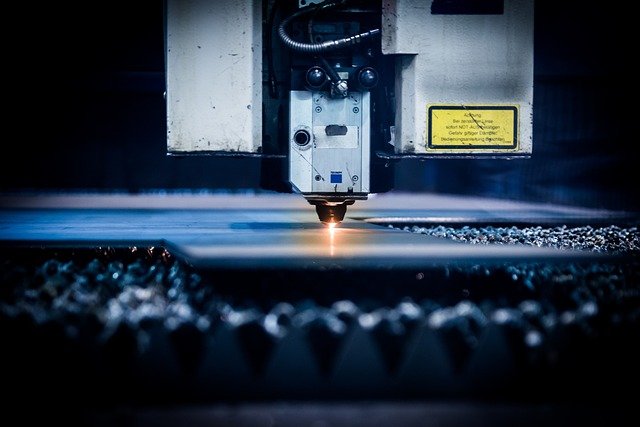Unlocking the Power of Laser-Cutting and Welding Machines for Your Workshop
Modern manufacturing and fabrication workshops are increasingly relying on advanced technology to improve precision, efficiency, and capabilities. Laser-cutting and welding machines represent significant technological advancements that have transformed how workshops operate. These sophisticated tools offer unprecedented levels of accuracy and versatility that traditional cutting and welding methods simply cannot match. Whether you're running a professional fabrication business or setting up an advanced hobbyist workshop, understanding how laser technology can enhance your capabilities is essential for staying competitive and achieving superior results.

The Precision of Laser-Cutting Machines
Laser-cutting machines have revolutionized material processing by offering exceptional precision that traditional cutting methods cannot achieve. These systems use a focused high-powered laser beam that can cut through various materials with remarkable accuracy—often achieving tolerances as fine as 0.1mm. The computer-controlled precision allows for intricate designs and complex patterns that would be extremely difficult or impossible with conventional cutting tools.
The non-contact nature of laser cutting eliminates many of the issues associated with mechanical cutting methods. There’s no tool wear to consider, no physical pressure applied to materials (reducing the risk of deformation), and significantly reduced material waste. Additionally, laser cutting creates clean edges that often require minimal post-processing, saving time and resources in your production workflow.
Modern laser-cutting machines can process a wide range of materials, including metals, plastics, wood, textiles, and composites. This versatility makes them invaluable for workshops that handle diverse projects or frequently change production requirements.
The Versatility of Laser Welding Machines
Laser welding represents another breakthrough technology that offers significant advantages over traditional welding methods. Using concentrated light energy, laser welding creates precise, strong joints with minimal heat-affected zones—a crucial factor when working with sensitive materials or components.
The focused nature of laser welding allows for working on extremely small components or in hard-to-reach areas that would challenge conventional welding techniques. This makes laser welding particularly valuable in industries such as electronics, medical device manufacturing, and precision engineering, where component miniaturization continues to advance.
Another significant advantage is the aesthetic quality of laser welds. These systems produce clean, narrow weld seams that often require no additional finishing. This characteristic is particularly important for visible joints in consumer products where appearance matters. The process also generates less splatter and fewer impurities than traditional welding methods, resulting in stronger, more reliable connections.
Laser welding machines can be programmed for repeatable, consistent results—a crucial factor for workshops focused on high-volume production or industries with stringent quality control requirements.
Enhancing Your Workshop’s Capabilities
Integrating laser-cutting and welding machines into your workshop creates numerous opportunities to expand your service offerings and improve production capabilities. With these technologies, you can tackle projects requiring higher precision, work with a broader range of materials, and deliver more consistent results than traditional methods allow.
The automation features available in modern laser systems also contribute to increased productivity. Many machines offer programming capabilities that allow for unattended operation, freeing up skilled personnel for other tasks while maintaining consistent output quality. This aspect is particularly valuable for workshops with limited staffing or those looking to maximize efficiency.
From a business perspective, laser technology can help workshops access new markets and client segments. The precision and quality these machines deliver meet the exacting standards of industries like aerospace, medical, and high-end consumer products—sectors that might otherwise be inaccessible with conventional equipment.
Investment in laser technology also signals to potential clients that your workshop is committed to quality and innovation. This perception can be a significant competitive advantage in markets where precision and cutting-edge capabilities are valued.
Cost Considerations for Workshop Laser Systems
The investment required for laser-cutting and welding equipment varies significantly based on power, size, features, and intended applications. Understanding these cost factors is essential for making informed decisions about incorporating this technology into your workshop.
| Machine Type | Power Range | Typical Price Range (EUR) | Best Suited For |
|---|---|---|---|
| Entry-level CO₂ Laser Cutter | 40-80W | €5,000 - €15,000 | Small workshops, non-metal cutting |
| Mid-range Fiber Laser Cutter | 500-1000W | €30,000 - €80,000 | Small-medium production facilities |
| Industrial Fiber Laser Cutter | 2000-6000W | €100,000 - €300,000 | Large-scale metal fabrication |
| Entry-level Laser Welder | 200-500W | €20,000 - €50,000 | Precision small-scale joining |
| Industrial Laser Welding System | 1000-6000W | €80,000 - €250,000 | Production welding operations |
Prices, rates, or cost estimates mentioned in this article are based on the latest available information but may change over time. Independent research is advised before making financial decisions.
Beyond the initial purchase price, workshops should consider ongoing operational costs including power consumption, maintenance requirements, specialized operator training, and consumables such as assist gases. Many manufacturers offer service contracts that can help manage maintenance costs more predictably, which is an important consideration for business planning.
While the initial investment is significant, the return on investment comes through increased productivity, expanded capabilities, reduced material waste, and access to higher-value projects. Many workshops find that laser technology pays for itself through these advantages, though the timeframe varies based on utilization rates and the types of projects undertaken.
Future Trends in Laser-Cutting and Welding
The technology behind laser-cutting and welding continues to evolve rapidly. Several emerging trends are worth monitoring as you consider integrating these systems into your workshop. Fiber laser technology has been gaining ground over traditional CO₂ lasers due to lower operating costs, higher efficiency, and reduced maintenance requirements. This shift is likely to continue as fiber laser technology becomes more affordable and accessible for smaller workshops.
Automation and integration with digital workflows represent another significant trend. Many new laser systems feature sophisticated software that connects directly with CAD/CAM programs, enabling seamless transition from design to production. Some manufacturers are also introducing artificial intelligence to optimize cutting paths and welding parameters automatically, further improving efficiency and reducing the learning curve for operators.
Environmental considerations are also driving innovation in laser technology. Newer systems are increasingly energy-efficient and designed to minimize waste. Some manufacturers are developing eco-friendly cooling systems and recycling options for consumables, helping workshops reduce their environmental footprint while complying with increasingly strict regulations.
Conclusion
Laser-cutting and welding machines represent transformative technologies for modern workshops, offering unprecedented levels of precision, versatility, and efficiency. While the initial investment is substantial, the capabilities these systems provide can significantly expand a workshop’s service offerings and competitive position. As the technology continues to evolve and become more accessible, workshops of all sizes have opportunities to harness these powerful tools to enhance their production capabilities and deliver exceptional results to their clients.




